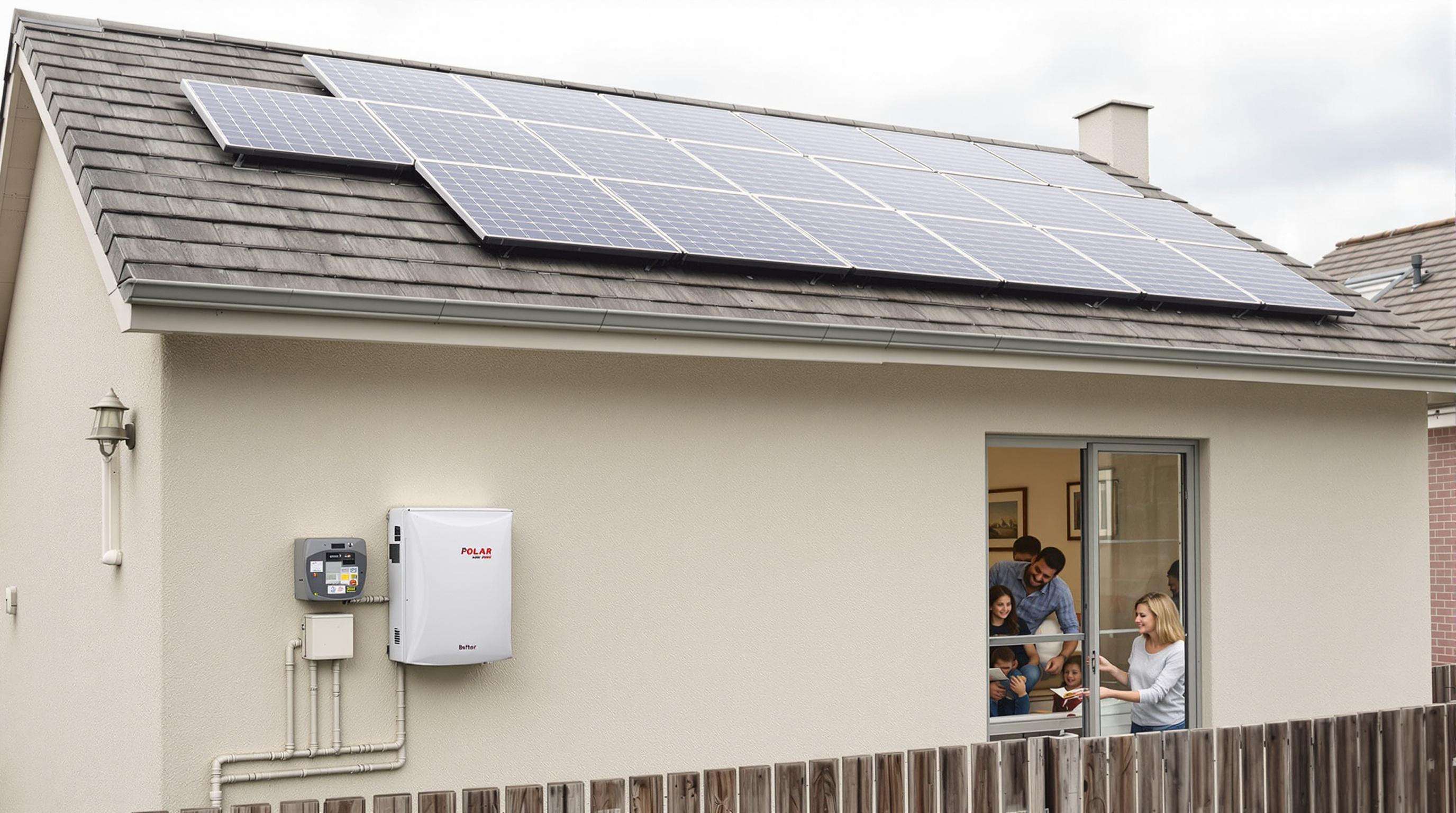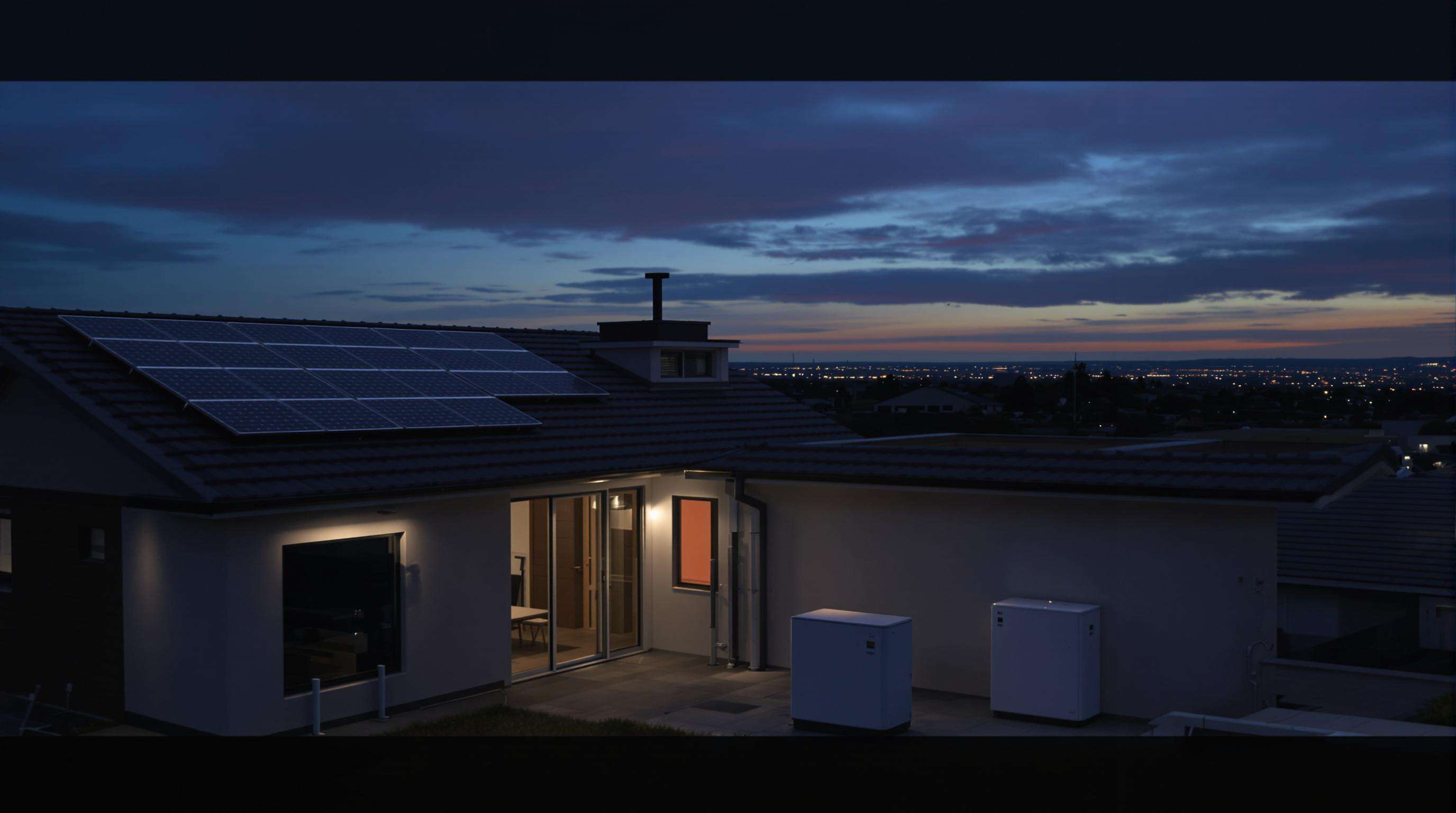
These days, our energy needs call for systems that can handle the fact that when we produce electricity doesn't always match when we actually need it. Take solar panels for instance they hit their highest output right around noon, while most homes tend to consume the most power first thing in the morning and again during dinner time. This is where batteries come in handy, storing extra solar energy when there's too much being generated. And this becomes really important stuff considering how fast solar installations are expanding worldwide about 30 percent each year according to SolarQuarter's latest data from 2025. When folks install these battery systems alongside their solar panels, they're able to squirrel away roughly 80 percent of what their panels produce throughout the day. That means instead of just having sunlight powered equipment during daylight hours, people end up with an actual backup system that works night and day.
Hybrid energy systems link regular grid connections with battery banks to balance things out when it comes to power supply. On sunny days when the sun is shining bright, those solar panels kick in to run the house and put any extra juice into the batteries for later use. If cloud cover rolls in or night falls and solar production slows down, the system will first tap into what's been stored in those batteries before switching over to drawing from the main grid. The smart control units installed make sure most of the generated solar power gets used right away, which cuts down on having to pay higher rates for electricity from the utility company during those costly peak hours. Plus, there's another nice benefit too these setups automatically switch to backup power whenever there's an outage, so important appliances keep running smoothly without anyone needing to do anything about it.
At the heart of modern solar systems sit hybrid inverters, acting like traffic controllers for all that energy flowing between panels, storage units, and the main power lines. These smart boxes do several things at once: first they switch the direct current from sunlight into alternating current we can actually plug into our appliances. Then they keep tabs on when batteries need charging and when they're full enough to stop. Some newer models get really clever too. They watch what's happening in real time around the house and decide whether extra power should go back into those batteries rather than just disappearing into the grid. Tests show this smarter approach makes systems work better by somewhere between 18 and maybe even 25 percent over older versions. And for regular folks living in these homes? They end up using roughly half again as much of their own generated power each day, which means lower bills and less reliance on outside sources.
Battery storage systems these days are pretty good at grabbing extra solar power made when the sun is out and then letting it go at night time or on those gray cloudy days. What this means is that solar panels stop being just something that works during the day and start providing electricity around the clock instead. That cuts down how much we need to rely on the regular power grid. Take a standard 10 kWh lithium battery for instance. Most homes find that such a battery will keep running important stuff like lights, fridge, and maybe even a few other appliances for somewhere between 12 to 18 hours when there's not enough sunshine coming in.
Hybrid solar setups combine regular solar panels with smart battery storage solutions, often featuring sophisticated inverters that help homeowners use their own power first. When there's extra electricity generated, these systems will send it into batteries instead of just sending everything out to the power grid, which creates better balance between when energy is made and when it gets used. The really clever part comes from the energy management software that actually learns how families consume power throughout the day. Some systems even check local weather reports so they know when sunny days are coming up versus cloudy ones, allowing them to charge batteries at optimal times and discharge stored energy when needed most.
Recent analyses of residential solar integrations show that households with battery storage achieve self-consumption rates up to 60%, compared to 20–40% in systems without storage. This improvement makes battery-backed systems especially valuable in regions with time-of-use pricing or frequent grid instability, reducing annual electricity expenses by an average of $580–$1,200 (Ponemon 2023).

Solar-powered homes with battery storage reduce grid dependence by storing surplus daytime energy for nighttime use. Lithium iron phosphate (LiFePO4) batteries offer up to 98% round-trip efficiency across charge cycles, enabling households to offset 40–80% of their annual grid power needs. This shift enhances energy independence and lowers long-term utility exposure.
Hybrid systems with battery storage provide seamless backup during grid failures, automatically powering critical devices such as refrigerators, medical equipment, and internet routers. Solar-integrated batteries activate within milliseconds of an outage—providing crucial resilience during storms or infrastructure malfunctions.
During Hurricane Elsa (2023), Florida homes equipped with 10–20 kWh battery storage maintained power for 3–5 days, while grid-dependent households faced extended blackouts. Similar results have been observed in wildfire-prone areas, where solar-plus-storage systems reduced emergency generator use by 72% (Energy Security Report 2024), underscoring their role in emergency preparedness.
When solar panels work together with battery storage, they create an energy system that cuts down on how much power needs to come from the grid during those expensive peak times. People who install these systems store extra sunlight generated around noon, then use it later at night when electricity prices jump up. According to recent research, families using batteries alongside solar save between half to three quarters of what they would normally pay for electricity each year compared to folks relying solely on the grid (EIA Report 2024). As more power companies switch to charging different rates depending on when people use electricity, this kind of setup becomes even more valuable over time.
Modern lithium iron phosphate (LiFePO4) batteries last 12–18 years—matching or exceeding the lifespan of solar panels—minimizing replacement costs and maximizing savings over time.
| System Component | Average Lifespan | Replacement Cost (2025) |
|---|---|---|
| Solar Panels | 25-30 years | $6,800 - $10,200 |
| LiFePO4 Battery | 15-20 years | $4,500 - $7,500 |
Industry analysis shows that adding storage to solar projects boosts revenue potential by 29–81%, with federal incentives like the 30% investment tax credit helping to accelerate payback periods.
LiFePO4 batteries deliver strong ROI due to their 6,000+ cycle life and zero maintenance requirements—lasting three times longer than lead-acid alternatives. In sunny climates, solar-plus-storage systems reach break-even in 6–9 years and generate $17,400–$23,100 in net savings over a 20-year period (National Renewable Energy Laboratory 2023).
Looking at the numbers, the home battery storage market should see some serious growth over the next few years. We're talking about jumping from around $1.96 billion back in 2024 all the way up to nearly $5.6 billion by 2032 according to SNS Insider's report from last year. Why? Well folks are paying more for their electricity these days, power grids keep having issues, and governments are throwing money at renewable solutions. One thing everyone seems to be noticing lately is how batteries are getting paired up with solar panels left and right. About seven out of ten new solar setups now come with battery storage attached. When these two technologies work together, homeowners can actually save money because smart systems figure out when to use stored energy versus drawing from the grid during those expensive peak hours.
The latest tech on the scene, including solid state batteries and those modular storage setups, packs around 28% more punch per unit volume compared to old school lithium ion stuff. When smart homes get connected to these systems, homeowners can automatically manage their heating cooling systems and electric vehicle charging at the same time, which really cuts down on wasted energy. Big name companies are starting to sell complete packages that combine solar panels with battery storage units, often backed by impressive 25 year guarantees. These warranty terms show just how much better these new systems last through charge cycles and general wear and tear over time.
A 2025 analysis of 2,800 North American households revealed significant improvements after integrating battery storage with solar panels:
| Metric | Before ESS Integration | After ESS Integration | Improvement |
|---|---|---|---|
| Grid dependency | 82% | 29% | -65% |
| Solar self-consumption | 41% | 89% | +117% |
| Annual energy savings | $880 | $2,340 | +166% |
The findings match what many industry experts are predicting for home energy storage markets. They expect this sector to hit around $35 billion by 2034 as lithium iron phosphate batteries keep getting cheaper each year at about 14%. Homeowners living where storms are common are starting to invest more seriously in energy storage systems that can last through two full days without power. These setups typically pair rooftop solar installations with two separate battery banks so essential appliances stay running even when weather knocks out electricity for extended periods.
Battery storage allows homeowners to store excess solar energy for use during non-sunny hours, reducing dependency on the power grid and lowering electricity bills.
Yes, hybrid systems with battery storage can provide seamless backup power during grid failures, keeping critical devices operational.
Modern lithium iron phosphate batteries last between 12 and 18 years, matching or exceeding the lifespan of the solar panels themselves.
Depending on the system and local conditions, solar-plus-storage setups reach break-even in 6-9 years, with potential net savings of $17,400–$23,100 over 20 years.